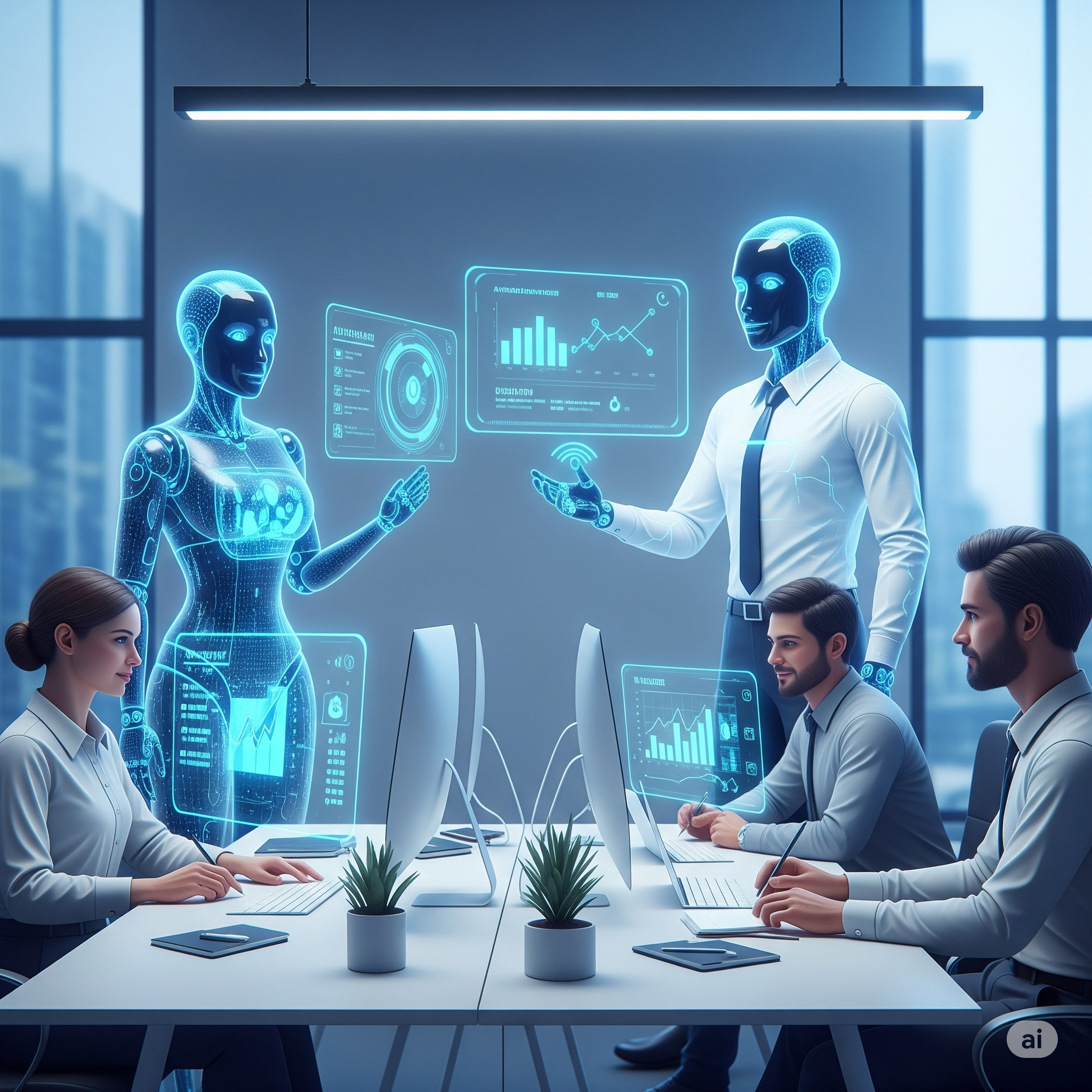For years, our interaction with Artificial Intelligence has largely been reactive. We ask a chatbot a question, and it provides an answer. We give a generative AI a prompt, and it creates content. But a new paradigm is rapidly emerging: Autonomous AI Agents. These aren’t just sophisticated tools; they are digital co-workers capable of understanding goals, planning multi-step actions, executing complex tasks independently, and even learning from their environment. This shift is not merely an incremental improvement; it’s a fundamental redefinition of what productivity looks like in the modern workplace.
The Agentic Revolution: What Sets Them Apart?
The key differentiator for autonomous AI agents lies in their “agency.” Unlike traditional AI that requires explicit, step-by-step instructions for every action, AI agents are goal-driven and proactive. They operate on a continuous loop of: Goal → Plan → Act → Learn.
- Autonomy: They can make decisions and take actions without constant human oversight. You provide a high-level objective, and the agent figures out the “how.”
- Adaptability: They learn from new data and outcomes, refining their behavior and improving performance over time. This makes them resilient to unforeseen scenarios.
- Tool Integration: Autonomous agents aren’t confined to a single function. They can interact with various external tools, APIs, and systems to achieve their objectives, from sending emails to managing databases or even controlling physical robots.
- Persistence: They maintain a goal-oriented focus over time, tracking objectives and sub-goals until completion, unlike one-shot interactions of typical chatbots.
Redefining Productivity Across Industries
The implications of this agentic revolution for productivity are profound and far-reaching. Businesses are already experiencing significant gains:
- Enhanced Efficiency and Automation: AI agents are taking over complex, repetitive, and time-consuming tasks. In manufacturing, they manage assembly lines and predict equipment failures. In customer service, they handle nuanced inquiries, resolving issues and escalating only when necessary. This frees up human employees to focus on higher-value, strategic, and creative work.
- Faster Decision-Making and Responsiveness: By analyzing vast datasets in real-time, AI agents can identify patterns, assess risks, and forecast outcomes within seconds. This capability empowers leaders to make data-driven decisions with unprecedented speed and accuracy, reducing operational friction.
- Seamless Scalability: Businesses can expand operations without proportional increases in human resources. AI agents can easily scale up or down to meet changing workloads, managing rising customer demands or optimizing supply chains more efficiently.
- Improved Risk Management: Continuous monitoring and predictive analytics allow autonomous agents to identify potential risks and anomalies in real-time. In finance, this translates to faster fraud detection and more robust compliance.
- Hyper-Personalization: AI agents can deliver highly personalized experiences in customer service, marketing, and internal operations by anticipating needs, adapting responses, and ensuring interactions are contextually relevant.
- Collaborative Workflows: Beyond individual task automation, multi-agent systems are emerging where several AI agents work together to achieve common, complex goals across departments. Imagine agents coordinating sales data, marketing metrics, and finance projections to generate a comprehensive business report, all without human intervention.
Real-World Glimpses of the Agentic Future (2025 and Beyond)
We’re already seeing autonomous AI agents in action:
- E-commerce: Agents are processing orders, tracking shipments, sending personalized recommendations, and even recovering abandoned shopping carts.
- Financial Services: AI agents are detecting fraud by analyzing thousands of transactions, offering 24/7 customer support (like Bank of America’s “Erica”), and providing personalized financial advice.
- Healthcare: AI agents are automating note-taking and updating electronic health records, assisting with triage, and even aiding in drug discovery by analyzing vast research data.
- IT Operations & Development: Tools like Devin, the “AI software engineer,” can develop, test, and debug code, while other agents automate routine IT tasks and monitor systems for anomalies.
- Logistics and Supply Chain: AI agents forecast demand, optimize delivery routes in real-time, and proactively alert for delays, ensuring smoother operations.
The Human-AI Partnership: A New Era of Work
It’s important to clarify that autonomous AI agents are not about replacing the human workforce entirely. Instead, they are empowering it. The future of work will be defined by a dynamic, collaborative partnership between humans and intelligent machines.
Humans will increasingly become “orchestrators” and strategists, delegating routine and complex computational tasks to their AI counterparts. This shift demands new skills: prompt engineering, system thinking, AI literacy, and perhaps most crucially, emotional intelligence and critical thinking – qualities that remain uniquely human.
The rise of autonomous AI agents marks a significant inflection point in productivity. Businesses that embrace this transformative technology, understand its ethical implications, and invest in upskilling their workforce will be best positioned to unlock unprecedented efficiencies, deeper insights, and a more engaged, empowered, and innovative future. The era of the truly intelligent digital co-worker has arrived.
Discover more from Nexus
Subscribe to get the latest posts sent to your email.
